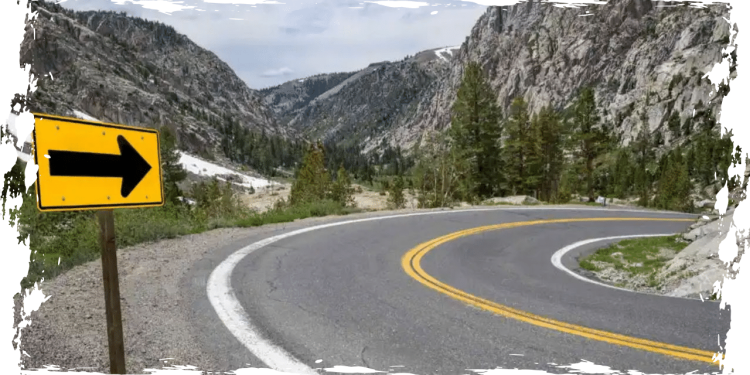Placing guardrails along mountain roads may not be as straightforward as it seems. Is it a viable solution? That’s a question that requires careful consideration.
As we drive along many roads, we notice the guardrails installed for our safety. However, when navigating through the treacherous mountainous regions of West Virginia, North Carolina, and Tennessee, we often wonder why some of these narrow roads lack guardrails. It may seem puzzling, but there could be a straightforward explanation for this.
What do mountains have in common?
Mountainous regions of the country are renowned for their snow-capped peaks and ski resorts. There is an ongoing debate about whether guardrails are necessary on narrow mountain switchback roads. Some argue that snowplows require more space to move snow, and guardrails would obstruct their efforts. The accumulation of snow on guardrails could lead to it building up on the road, rendering the snowplow’s efforts futile.
Stability is a crucial factor when it comes to guardrails. They require a strong and steady foundation to effectively serve their purpose. Without stability, guardrails may not be able to provide the necessary protection and safety that they are intended for. Therefore, it is important to ensure that guardrails are installed correctly and securely to prevent any potential hazards.
A guardrail is designed to assist vehicles in avoiding hazardous situations. Although it doesn’t actively do anything, it serves as a barrier that must be strong and secure enough to slow down or completely halt a vehicle traveling along the road. In areas with tight and narrow mountain roads, securing a guardrail can be a challenge due to insufficient rock and dirt to provide the strength required to prevent vehicles from falling off the edge.
It is important to note that implementing guardrails comes with a price. The cost associated with adding guardrails should not be overlooked.
Would anyone willingly want to pay extra taxes? I doubt it. However, it’s essential to realize that taxes contribute to the development of our infrastructure, especially the roadways and safety features. Installing guardrails along mountainous routes can be an expensive affair. It requires work crews to reach the area and carry out the installation process, which could lead to the temporary closure of roads. Despite how they appear, these metal structures don’t grow out of the ground, especially along highways.
Guardrails are prohibited in certain locations due to legal restrictions.
Some individuals may argue that safety is not as essential as a picturesque view, but certain laws safeguard the natural beauty found in various national and state parks. In line with a Reddit discussion, the installation of structures in parks like Yosemite could potentially impede the park’s natural aesthetics, which may be deemed unlawful.
Drivers are not compelled to slow down due to the absence of any guardrails.
As I’ve traveled along mountain roads, I’ve come across speed limit signs that mandate driving at 55 MPH. However, I’ve often found myself feeling safer going only at around 35 MPH on these roads. The absence of guardrails demands that drivers be more attentive to their driving and the road. Making a wrong turn on a mountain road can lead to nothing but danger and risk.

